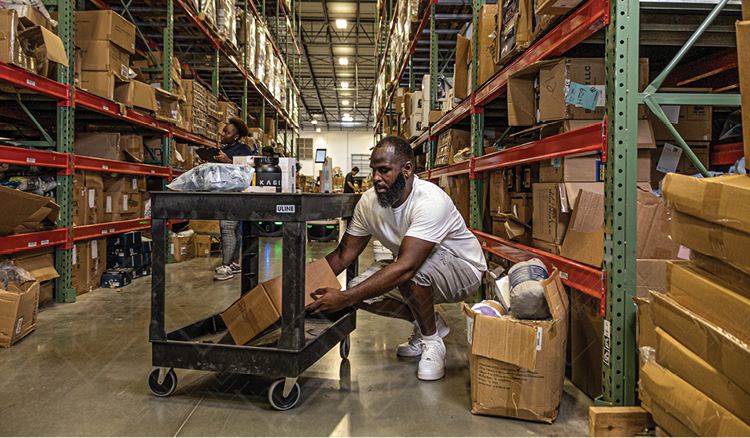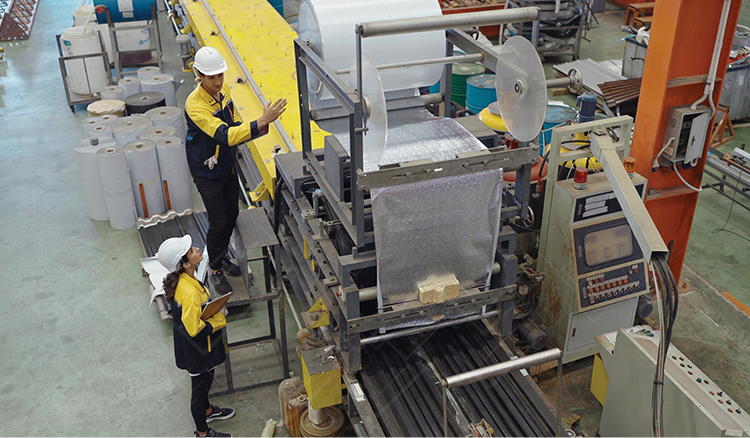The Metaverse and Manufacturing: Hype vs Reality
Manufacturing has long had the concept of a “digital twin” of physical facilities and their machines. The consumer-oriented version of this concept has been branded the “metaverse” and is catching on among Silicon Valley figureheads and social media companies.
Rest assured, the metaverse isn’t something that you have to worry about tomorrow. Despite the hype, we’re likely a decade or more away from this idea manifesting in reality. However, it’s worth thinking about what opportunities exist here because of the tendency of tech-fueled changes to sneak up on us more quickly than we expected.
So, what exactly is the metaverse? And what opportunities might its popularity among tech companies and consumers translate into for manufacturing companies?
Defining the metaverse
Since the mid-20th century, the idea of a persistent virtual world has shown up time and again in science fiction and among thought leaders in tech spheres. Much like the Internet, it is difficult to pin a textbook definition on the idea of the metaverse, especially when it doesn’t fully exist yet.
An influential essay by venture capitalist Matthew Ball defines the metaverse based on six key characteristics:
- Persistence
- Synchrony
- Limitless concurrent users
- Fully functioning economy
- Spanning digital/physical world, private/public networks, open/closed platforms
- Interoperability of data, digital assets, etc
- Content made by a wide range of contributors
By these counts, we are far from this complete vision of the metaverse being a reality. How long it will take us to reach this, nobody knows. It could be decades, or it could be years. But the consensus is forming that we are inevitably headed toward the birth of the metaverse.
Why is the metaverse getting so much hype?
People are talking about the metaverse in ways quite similar to how they talked about the Internet. We have a vague idea of what it could look like, and a few use cases that we can clearly imagine, but in reality we have no clue how it will all pan out.
Who could have predicted that mobile phones would become the primary way most people use the Internet? Who would have guessed that apps would mobilize workforces, create a new dating culture, and take over the entertainment industry?
All the potential can be disorienting. That’s why progress will be inch by inch, as the leaders and pioneers in the space move us forward with each new interface and application. And if it happens how it did with the Internet, consumer-oriented applications will quickly take over and create demand in the space.
Just look at Amazon, eBay, and Shopify’s effect on commerce, and you’ll see why consumer adoption of the metaverse might have earthshaking effects on manufacturing. Just like eCommerce and near-instant shipping have become the norm for many operations, so might new forms of commerce and new consumer expectations emerge due to the next technological advancement.
The metaverse vs digital operations
Digital transformation is seen as the continuation of the waves of industrial revolution. The most recent wave is characterized by digital connectedness of machines and a focus on advanced software solutions, but has mostly been physical-first in nature. Machines and systems connect to each other, and we use the connections to better understand the physical. But with digital operations, the digital is still subordinate to the physical.
The metaverse, by contrast, is a digital-first world. Whereas the goal with digital operations is to digitally enhance the physical world of the supply chain, the goal with the metaverse is to have a primarily digital space that is translated onto the physical world. It is persistent and stands on its own, but can also interface with reality.
With these differences in mind, the question arises: would adopting a metaverse approach to manufacturing fit within the current wave of digital operations, or signal the beginning of the next revolution in manufacturing?
How might the metaverse impact manufacturing?
A digital-first approach driven by consumer preferences and actions in the metaverse might be fundamentally different from our current reality.
Think of how different social media is from traditional media; anyone can produce at any time, and the economy of attention has changed drastically as a result.
The metaverse is to eCommerce as social media is to traditional media, with the transformation dial cranked up to 11. More and more consumers will become designers and creators, creating new demands and changing how things are made.
Production process design will become more rapid
With better virtual spaces to simulate your facility’s production process in, you could quickly see how moving your assets around would impact production. BMW has already simulated one of their manufacturing facilities to plan their production process more accurately. They can simulate real physics and identify ways their work can be made more efficient and safe, without having to slow their production to achieve the same results by physically testing all the changes one at a time.
The number of product designs will increase exponentially
Imagine the general public armed with the ability to easily render and simulate 3D prototypes of custom products whenever they want. More and more people will be empowered to create, much like how YouTube created a whole legion of content creators who now make a living creating and sharing videos. Many of these creators have lines of merchandise and create designs for products, establishing a well-worn pathway between content creation and selling physical products, to the point that it has become a meme.
The same could happen with advancements in the metaverse as tools for 3D content creation become readily available.The applications for digital world-building tools in niches are being expanded as people realize their potential uses in other areas. Video game engines are being repurposed for architectural renderings, and VR applications for businesses and consumers (example: Gravity Sketch) enable them to easily collaborate to build models that would have previously required niche professional training, long lead times, and prohibitively expensive tools to create.
As interoperability initiatives enable connections between these accessible tools and manufacturing machinery, product designs will be easier to implement. This will mean designers and creators of all kinds will no longer have to go through as many intermediaries to get their designs into the hands of manufacturers, resulting in the number of product designs increasing exponentially.
Product development will become more collaborative and speed up dramatically
Inevitably there will be specialized tools for manufacturers to use which will enable them to harness the same power of the real-time 3D modeling tools mentioned before to collaboratively create CAD files and make product suggestions to upstream suppliers.
These advancements will make it easier and faster to request modifications from upstream suppliers, and for you to gain insight into how your product is being used by your customers.
Customers will expect supply chain transparency
Imagine if customers develop the expectation of being able to track their order from raw materials to finished product on their doorstep. If trends in supply chain transparency continue, this could be the future.
Technology will allow insight into every piece of a customer’s order as it moves toward assembly, shipping, and finally onto their doorstep. There are already solutions (example: Alitheon) being developed that would enable such transparency.
What’s the realistic next step forward?
Despite all the hype, we are far from the metaverse reaching the vision people have for it today. We lack the infrastructure to support all the data, compute power to process the data, and adequate interfaces affordable enough for widespread adoption.
For manufacturers, meeting the mark in digital operations is the first realistic step. We have to be able to provide meaningful inputs to whatever form the metaverse might take if there is any hope of gaining utility by interfacing with it. As the old adage goes: crap in, crap out. Therefore we have to harvest data from our processes, organize all the data, and broadly implement interoperability protocols for connecting data across the supply chain.
Naturally, at Veryable we believe the best place to start your digital transformation is with labor. It all comes back to the people doing the work, because work creates value. You should digitally enable your workforce with real-time guidance, which lowers barriers to entry and generates data on your processes. This makes it much easier to flex your labor capacity as needed to meet demand, using an on-demand labor solution like Veryable. It is also a step toward the digital future of manufacturing.
To learn more about how flexible labor capacity enables the future of manufacturing, read our blog on what on-demand labor is.
Previous Posts
How Policy Constraints, Not Just Production Bottlenecks, Threaten Your Bottom Line
The Future of Manufacturing and Logistics
Create a free business profile today to explore our platform.






